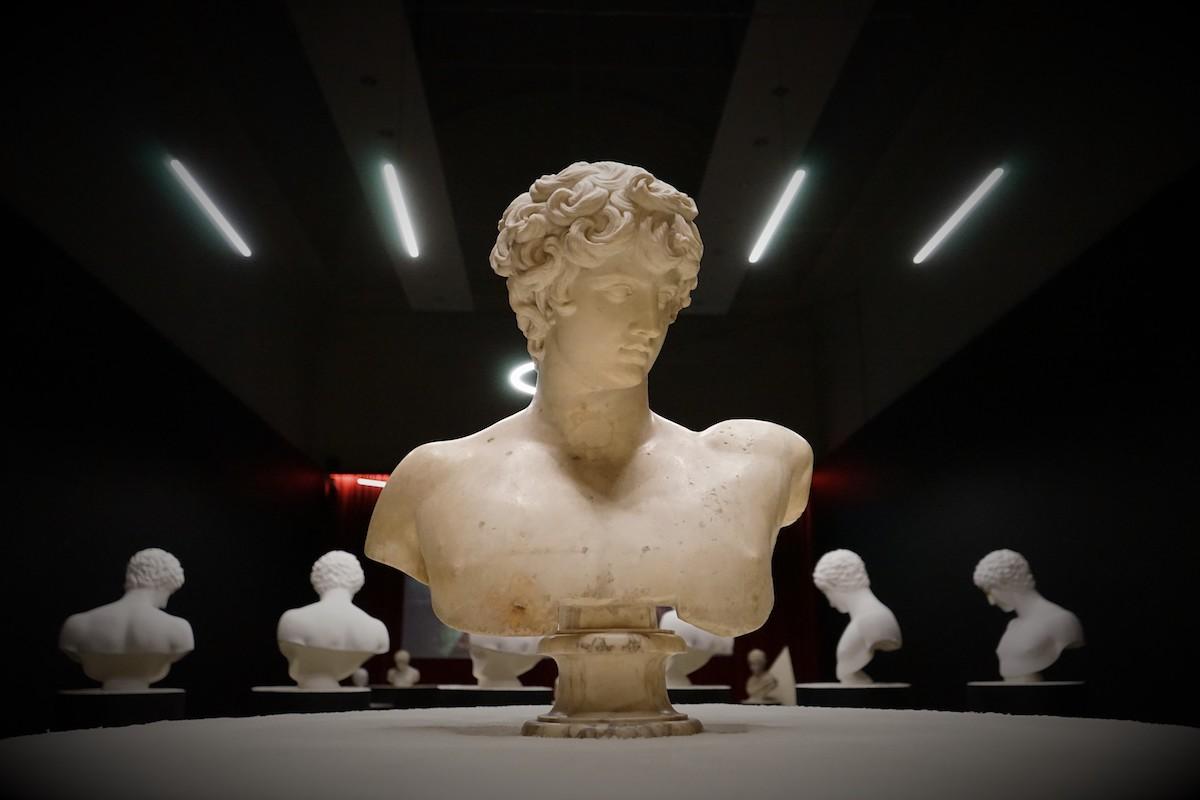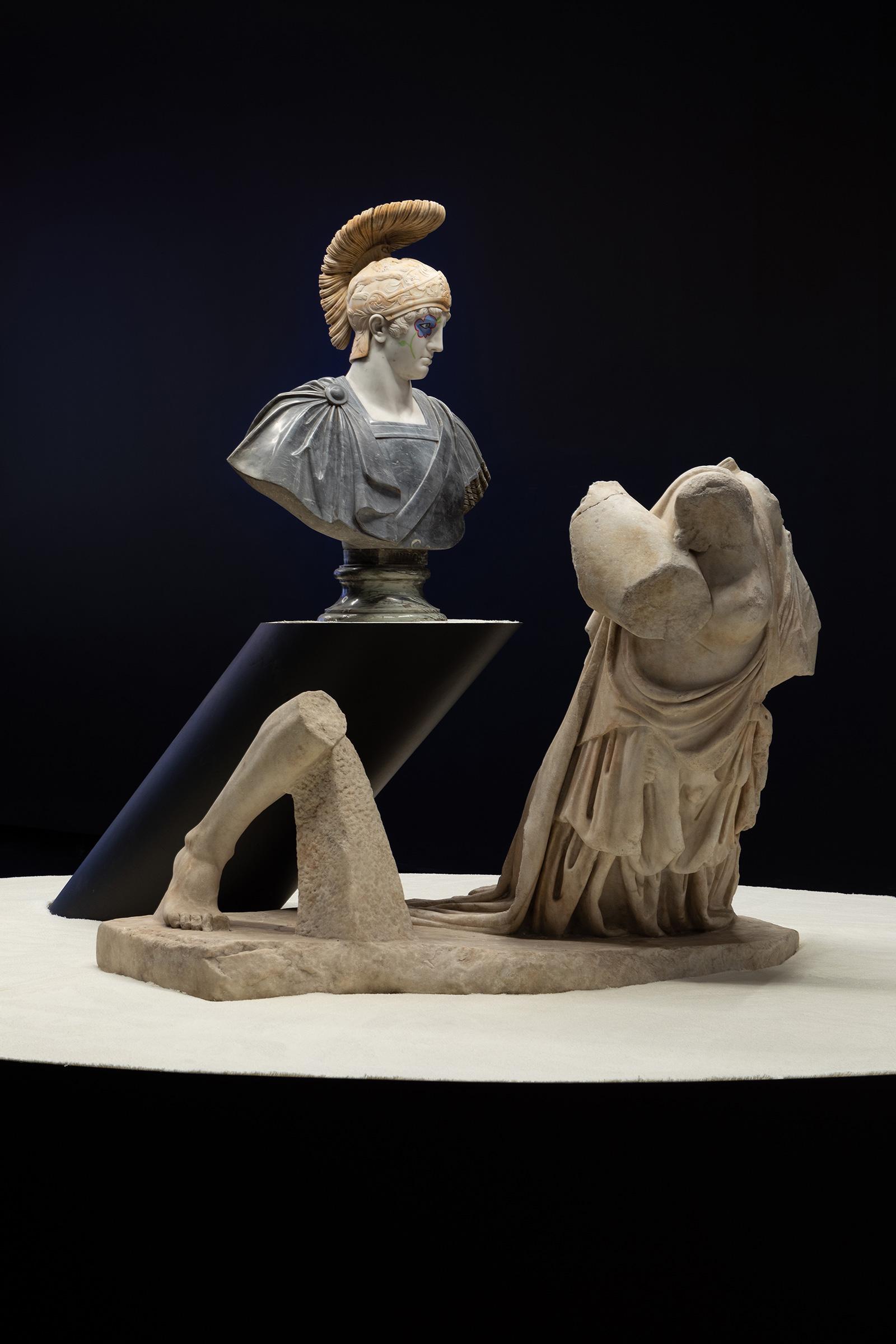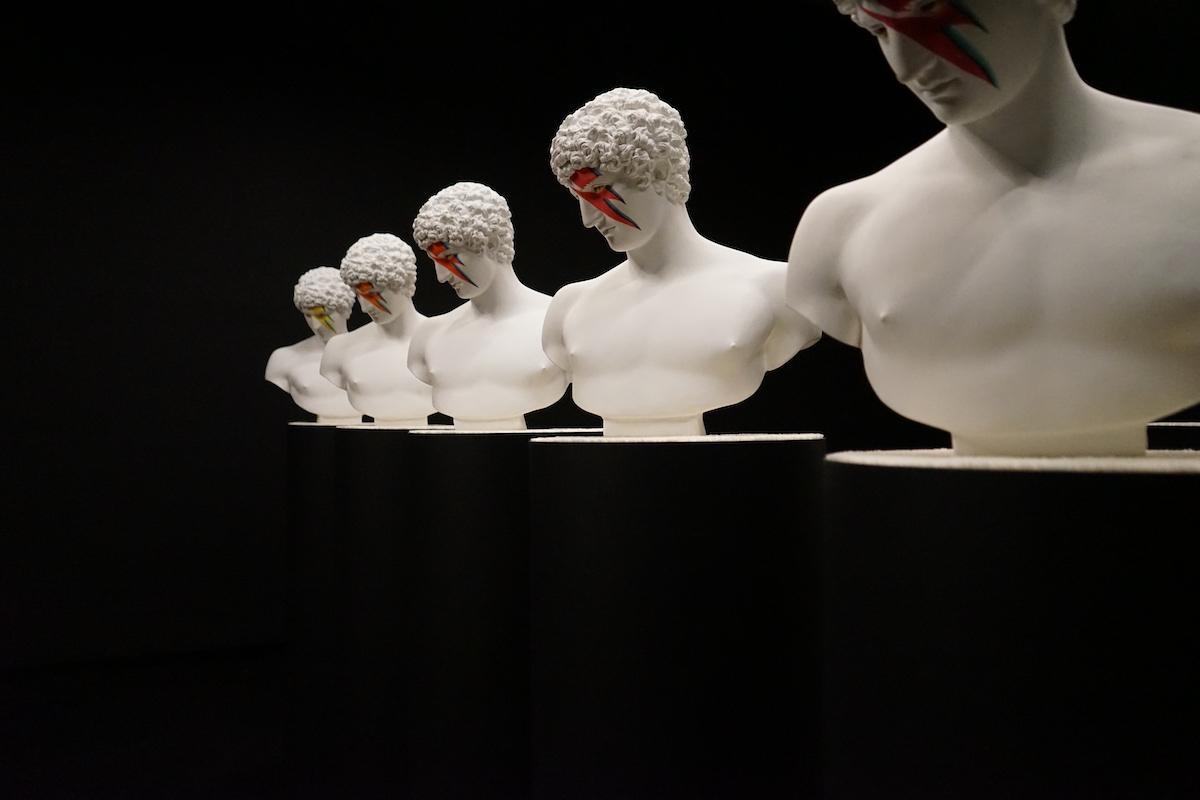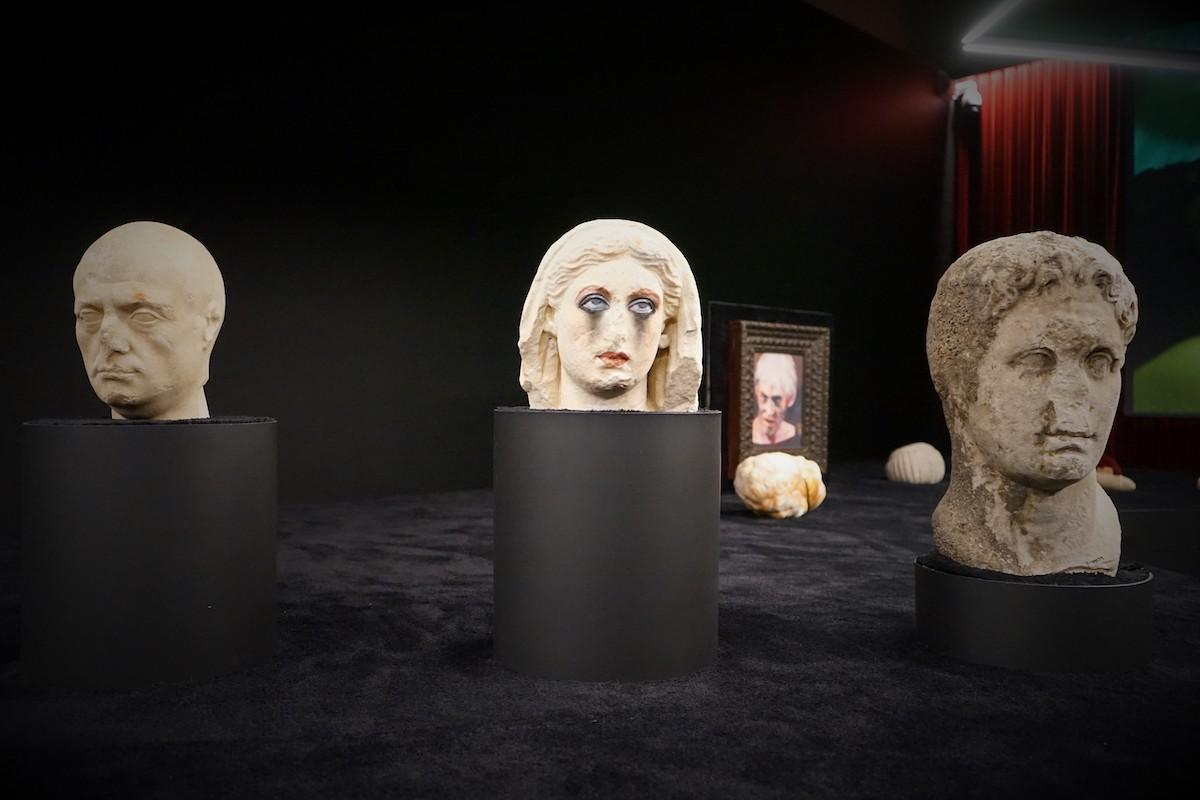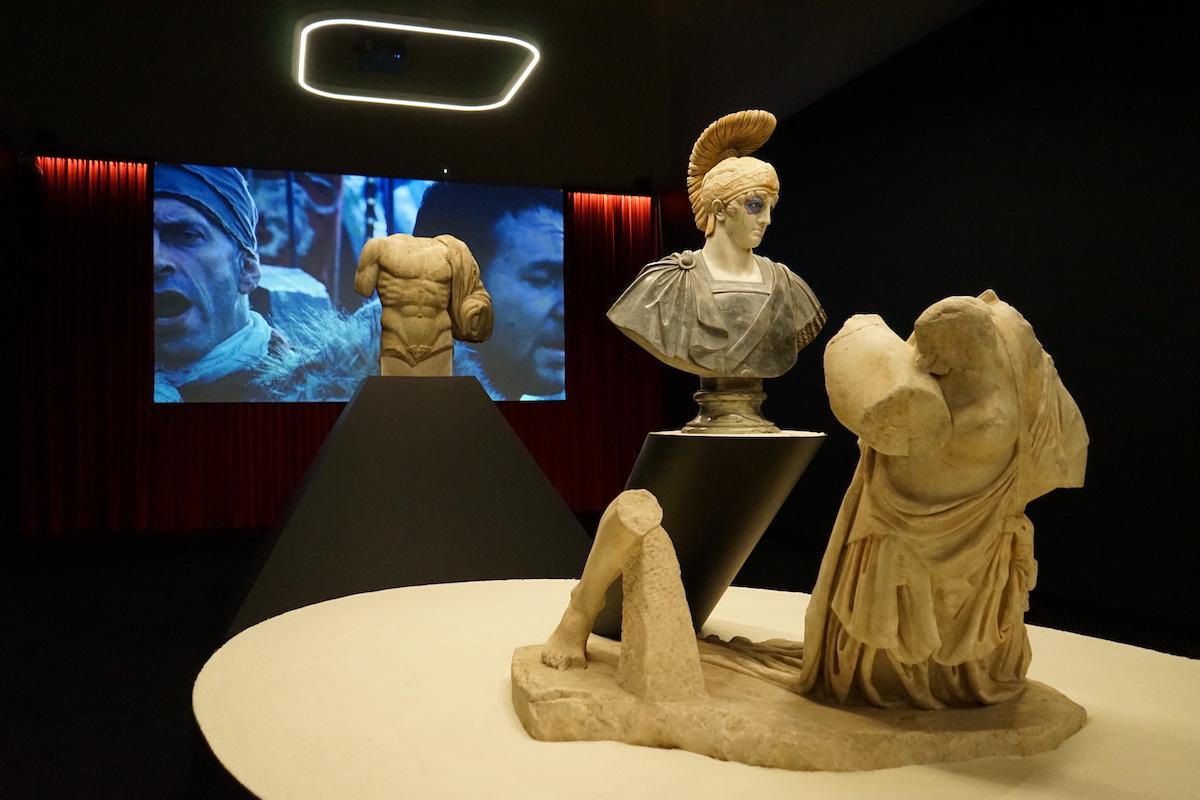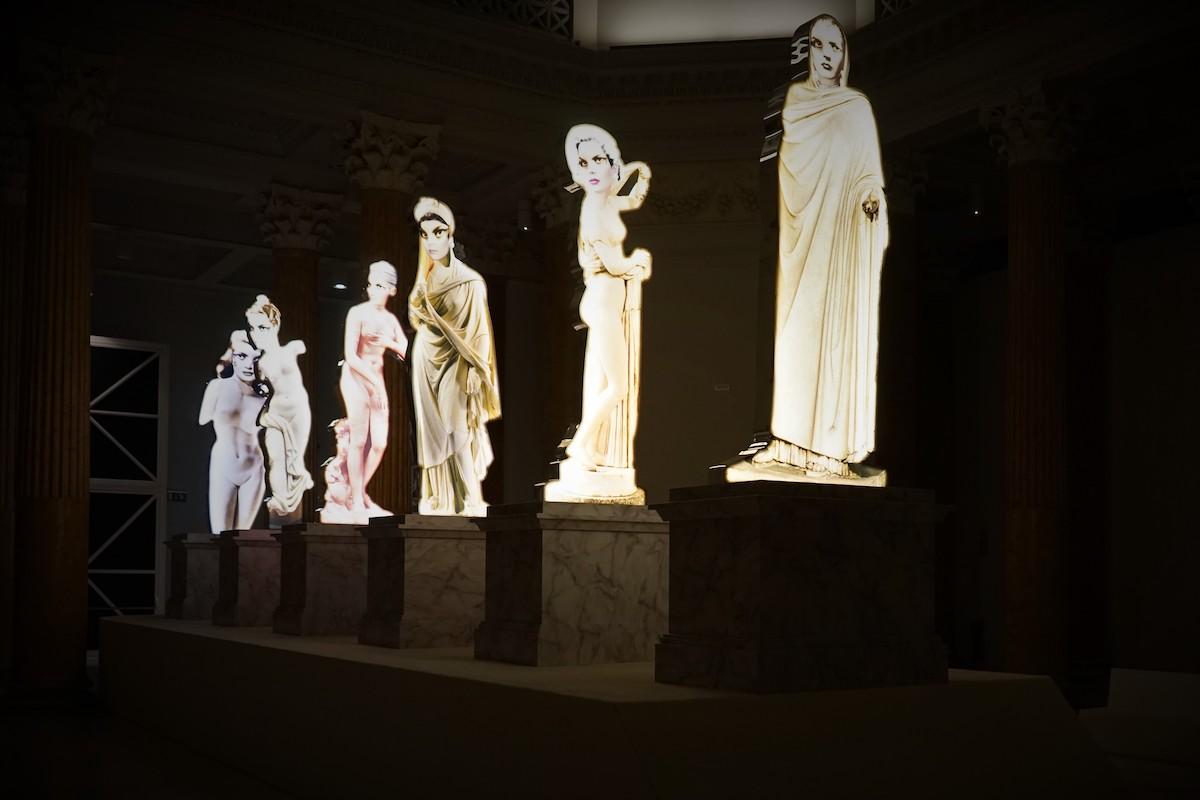Done well, such collaborations present new ways of looking at old objects and provide greater contextualisation for modern ideas and concepts. Done poorly, they risk being kitsch and cliché.
‘Vita Dulcis: Fear and Desire in the Roman Empire’ is an exhibition at Palazzo Esposizioni in Rome. Its curators are the Italian artist Francesco Vezzoli and the archaeologist Stéphane Verger, director of the Museo Nazionale Romano, which houses one of the greatest archaeological collections in the city. It combines a selection of pieces from Vezzoli’s repertoire of work based on engaging with the Roman world going back over a decade, with dozens of ancient sculptures and inscriptions.
The exhibition is divided into eight spaces. In the central hall, stand six black and white illuminated figures. Rendered in 2D, their bodies are modeled on Classical-era sculptures of the goddess Venus, the wife of the emperor Hadrian, and a Maenad – a follower of god Dionysus. Their faces, however, have been replaced with the portraits of modern female stars, including Sharon Stone and Anita Ekberg. The titles of these works vary depending on the ancient statues being used, but follow the formula ‘Portrait of a Diva as the Venus from Knidos with the Eyes of My Mother’, the final part referring to the fact that Vezzoli has substituted the stars’ eyes for those of his mother. As unsettling as this detail might appear, work is effective in conveying a sense of classic Hollywood glamour and is a strong example of the exhibition design by artist Filippo Bisagni and lighting design by cinematographer Luca Bigazzi, setting the tone of the show.




